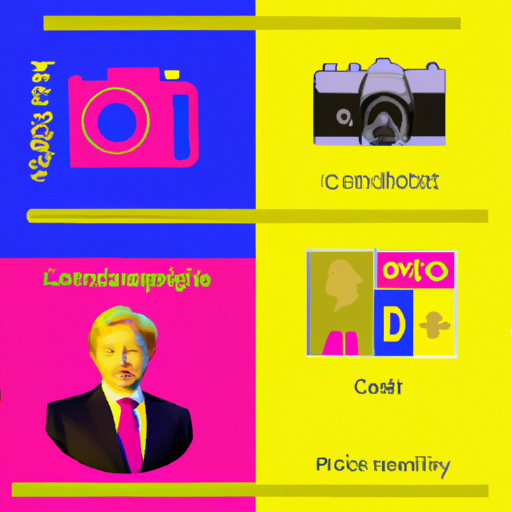
-
Table of Contents
- The Role of Design in Political Campaigns
- The Power of Visual Communication
- Case Studies: Successful Design in Political Campaigns
- Barack Obama’s 2008 Presidential Campaign
- Donald Trump’s 2016 Presidential Campaign
- The Role of Design in Digital Campaigns
- The Impact of Design on Voter Perception
- Summary
The Role of Design in Political Campaigns

Design plays a crucial role in political campaigns, shaping the way candidates and parties communicate their messages to voters. From campaign logos and branding to website design and social media graphics, every visual element is carefully crafted to create a strong and memorable impression. In this article, we will explore the importance of design in political campaigns and how it can influence voter perception and engagement.
The Power of Visual Communication
Visual communication is a powerful tool in political campaigns. It allows candidates to convey their values, beliefs, and policy positions in a way that resonates with voters. Effective design can evoke emotions, create a sense of trust, and make complex ideas more accessible. Here are some key ways design influences political campaigns:
- Creating a Strong Brand Identity: A well-designed campaign logo and branding can help candidates establish a strong and recognizable identity. For example, the iconic “Hope” poster used in Barack Obama’s 2008 presidential campaign became a symbol of his message and resonated with voters.
- Building Credibility and Trust: Professional and polished design elements, such as high-quality campaign materials and well-designed websites, can enhance a candidate’s credibility and trustworthiness. Voters are more likely to take a candidate seriously if their campaign materials look professional and well thought out.
- Conveying Policy Positions: Design can be used to simplify complex policy positions and make them more accessible to voters. Infographics, charts, and visual representations of data can help candidates explain their plans and proposals in a way that is easy to understand.
- Creating Emotional Connections: Design can evoke emotions and create a sense of connection between candidates and voters. Colors, typography, and imagery can be used strategically to elicit specific emotions and create a memorable experience.
Case Studies: Successful Design in Political Campaigns
Several political campaigns have successfully utilized design to create a strong impact on voters. Let’s take a look at some notable examples:
Barack Obama’s 2008 Presidential Campaign
Barack Obama’s 2008 presidential campaign is often cited as a prime example of effective design in politics. The campaign’s logo, featuring a blue “O” with red and white stripes, was simple yet powerful. It conveyed a sense of unity and hope, aligning with Obama’s message of change and progress. The logo was used consistently across all campaign materials, creating a strong and recognizable brand identity.
The campaign also utilized social media platforms, such as Facebook and Twitter, to engage with voters. The design of their social media graphics and posts was visually appealing and consistent with the overall campaign branding. This cohesive design approach helped the campaign reach and connect with a wide audience.
Donald Trump’s 2016 Presidential Campaign
Donald Trump’s 2016 presidential campaign also made effective use of design to communicate its message. The campaign’s slogan, “Make America Great Again,” was prominently displayed on red caps worn by supporters. This simple yet powerful design choice created a strong visual association with the campaign and became a symbol of Trump’s message.
The campaign’s use of social media, particularly Twitter, was also notable. Trump’s tweets often featured bold and attention-grabbing graphics, reinforcing his key messages and engaging with his followers. The design of these graphics played a significant role in shaping the narrative around the campaign.
The Role of Design in Digital Campaigns
In today’s digital age, political campaigns heavily rely on online platforms to reach and engage with voters. Design plays a crucial role in creating visually appealing and user-friendly websites, social media graphics, and online advertisements. Here are some key aspects of design in digital campaigns:
- Website Design: A well-designed campaign website is essential for providing information to voters, collecting donations, and mobilizing supporters. The website should be visually appealing, easy to navigate, and optimized for mobile devices.
- Social Media Graphics: Social media platforms, such as Facebook, Twitter, and Instagram, offer a unique opportunity for candidates to connect with voters. Eye-catching graphics and well-designed posts can help campaigns stand out in users’ feeds and increase engagement.
- Online Advertisements: Design plays a crucial role in creating effective online advertisements. Attention-grabbing visuals, compelling copy, and clear calls-to-action are essential for driving engagement and conversions.
The Impact of Design on Voter Perception
Design has a significant impact on how voters perceive political candidates and parties. A well-designed campaign can create a positive impression and influence voter behavior. Here are some ways design can shape voter perception:
- Professionalism and Competence: A well-designed campaign signals professionalism and competence. Voters are more likely to trust and support candidates who present themselves in a polished and professional manner.
- Authenticity and Trustworthiness: Design can help convey a sense of authenticity and trustworthiness. Consistent branding and high-quality materials can create a perception of transparency and honesty.
- Accessibility and Inclusivity: Design can make political campaigns more accessible and inclusive. Clear and easy-to-understand visuals can help candidates reach a broader audience and engage with voters who may have limited political knowledge.
- Emotional Connection: Design can evoke emotions and create a sense of connection between candidates and voters. Thoughtful design choices can help candidates establish an emotional bond with voters, making them more likely to support their campaign.
Summary
Design plays a crucial role in political campaigns, shaping the way candidates communicate their messages and influencing voter perception. From creating a strong brand identity to conveying policy positions and building emotional connections, design is a powerful tool for political communication. Successful campaigns, such as Barack Obama’s 2008 presidential campaign and Donald Trump’s 2016 presidential campaign, have utilized design effectively to engage with voters and create a lasting impact. In today’s digital age, design is particularly important in online platforms, where candidates rely on visually appealing websites, social media graphics, and online advertisements to reach and engage with voters. By understanding the role of design in political campaigns, candidates can effectively communicate their messages and connect with voters on a deeper level.
